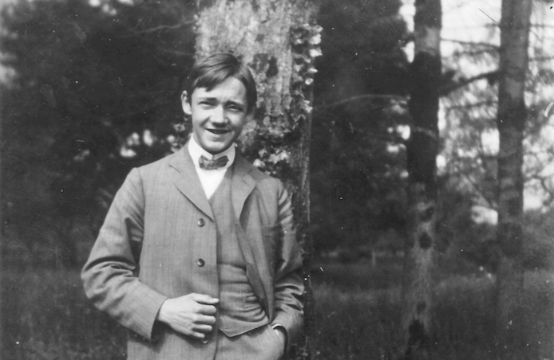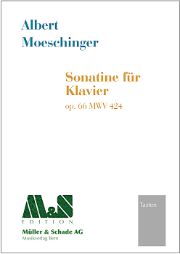Short but rich musical course
The piano sonatina by Albert Moeschinger, composed in Saas Fee in 1944, offers a great deal of variety in a short length.

The name Albert Moeschinger only appears sporadically in concert programs in Switzerland, and he seems to be almost unknown to the younger generation of musicians. He was born in Basel in 1897, where he also went to school and then - in accordance with his father's wishes - began an apprenticeship as a banker. However, he soon abandoned this and devoted himself to music studies in Bern, Leipzig and Munich. He initially earned his living as a coffee house musician and later as a teacher at the Bern Conservatory.
As a composer, Moeschinger explored the most diverse styles and created an oeuvre of over 100 opus numbers in almost all genres. Prominent soloists such as Walter Gieseking played his piano concertos, while Hermann Scherchen, Paul Sacher and other conductors championed his orchestral works.
For health reasons, Moeschinger gave up his teaching position in Bern in 1943 and subsequently lived as a freelance artist in Saas Fee, Ascona and Thun, where he died in 1985.
Why is his music so rarely performed today? It cannot be due to its quality. His piano concertos and works for solo piano in particular reveal an extremely skillful use of the instrument's possibilities. And so one can only be grateful that the publisher Müller & Schade has published the Sonatina op. 66 has been newly published. A varied three-movement work on a total of 13 pages, which is reminiscent of Ravel's Sonatine pour piano, and not only because of its short length. In Ravel's case, too, the title does not refer to a student piece, but rather a deliberate, economical reduction of the temporal dimension.
The pianistic demands are not overly great, and the piano writing is generally very good. Some passages require skillful crossing of the hands (which is sometimes a little awkward in Ravel's work ...). Despite the deliberate reduction of compositional means, the three movements are very different in character and sound, so that the impression of a rich musical parcours remains in one's memory.
Hopefully the publisher Müller &Schade will publish more such trouvailles by Moeschinger in the future. (So far available for piano are: Kleine Klavierstücke M&S 1999, Danses américaines M&S 2095, Fête de capricorne, M&S 2107). And then perhaps also with some accompanying text and further information on this exciting musician.
Albert Moeschinger: Sonatina for piano op. 66, M&S 2144, Fr. 12.00, Müller & Schade, Bern








